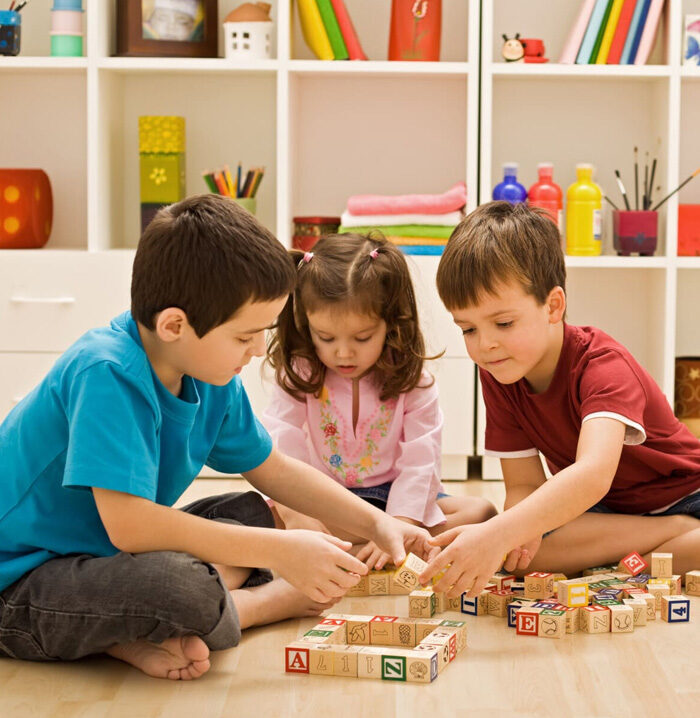
Introduction
There is evidence that the quality of interactional processes that children experience in non-familial institutions such as preschools (captured at the individual child level or at the preschool class level; often referred to as ‘process quality’ or ‘interaction quality’, Schmidt et al. 2018) predicts the development of their competencies in various domains, including lasting effects related to their school career (e.g. social-emotional skills, academic outcomes such as literacy and maths; Sylva et al. 2006; Kluczniok and Roßbach 2014; Ulferts, Wolf, and Anders 2019). Due to this high predictive importance, the quality of interactions has also been referred to as the central component of educational quality (Tietze et al. 1998). Thus, many studies have examined predictors of interaction quality, including structural characteristics of preschools and preschool classes, preschool teacher characteristics, activity settings, preschool teachers’ activities, and children’s activities (Kluczniok and Roßbach 2014; Vermeer et al. 2016; Smidt and Embacher 2020). Furthermore, particularly with regard to interactions at the child level, previous research also examined relationships between child characteristics (e.g. age, gender or language skills) and interaction quality (Vitiello et al. 2012a; Smidt, Embacher, and Kluczniok 2020). However, there are still empirical research gaps with regard to the investigation of theoretically important predictor variables of interaction quality. Specifically, only a few studies have examined the influence of child personality on interaction quality (Vitiello et al. 2012b); although there are strong hints that children’s personality influences how they interact with others in preschool.
For instance, research on the personality types ‘resilient’, ‘undercontrolled’ and ‘overcontrolled’, replicated in many studies (Asendorpf et al. 2001; Chapman and Goldberg 2011), showed that children identified as ‘resilients’ were rated as more sociable compared to ‘undercontrollers’ and ‘overcontrollers’ (Asendorpf et al. 2001). In addition, children identified as ‘undercontrollers’ were judged as more aggressive and ‘overcontrollers’ had higher behavioural inhibition to adults and peers than ‘resilients’ (Asendorpf and van Aken 1999). Despite this previous research indicating the predictivity of children’s personality for their behaviour and interactions, in general, there is still a lack of evidence regarding the influence of children’s personality on interaction quality in preschools, specifically. The aim of the present study was to address this gap in the literature by examining the association between personality types of preschool children and the quality of their interactions in preschools. Interaction quality was assessed with the observation and rating tool ‘Individualized Classroom Assessment Scoring System’ (inCLASS; Downer et al. 2010), which focuses on the interaction quality at the individual child level and therefore provides a detailed picture of individual patterns of interactions and the corresponding need for improvement (Smidt and Embacher 2020). In addition, building upon previous research on predicting interaction quality in preschools, we considered structural characteristics, other child characteristics, activity settings, preschool teachers’ activities, and children’s activities as control variables. Interaction quality in preschools – theoreti


Introduction
There is evidence that the quality of interactional processes that children experience in non-familial institutions such as preschools (captured at the individual child level or at the preschool class level; often referred to as ‘process quality’ or ‘interaction quality’, Schmidt et al. 2018) predicts the development of their competencies in various domains, including lasting effects related to their school career (e.g. social-emotional skills, academic outcomes such as literacy and maths; Sylva et al. 2006; Kluczniok and Roßbach 2014; Ulferts, Wolf, and Anders 2019). Due to this high predictive importance, the quality of interactions has also been referred to as the central component of educational quality (Tietze et al. 1998). Thus, many studies have examined predictors of interaction quality, including structural characteristics of preschools and preschool classes, preschool teacher characteristics, activity settings, preschool teachers’ activities, and children’s activities (Kluczniok and Roßbach 2014; Vermeer et al. 2016; Smidt and Embacher 2020). Furthermore, particularly with regard to interactions at the child level, previous research also examined relationships between child characteristics (e.g. age, gender or language skills) and interaction quality (Vitiello et al. 2012a; Smidt, Embacher, and Kluczniok 2020). However, there are still empirical research gaps with regard to the investigation of theoretically important predictor variables of interaction quality. Specifically, only a few studies have examined the influence of child personality on interaction quality (Vitiello et al. 2012b); although there are strong hints that children’s personality influences how they interact with others in preschool.
For instance, research on the personality types ‘resilient’, ‘undercontrolled’ and ‘overcontrolled’, replicated in many studies (Asendorpf et al. 2001; Chapman and Goldberg 2011), showed that children identified as ‘resilients’ were rated as more sociable compared to ‘undercontrollers’ and ‘overcontrollers’ (Asendorpf et al. 2001). In addition, children identified as ‘undercontrollers’ were judged as more aggressive and ‘overcontrollers’ had higher behavioural inhibition to adults and peers than ‘resilients’ (Asendorpf and van Aken 1999). Despite this previous research indicating the predictivity of children’s personality for their behaviour and interactions, in general, there is still a lack of evidence regarding the influence of children’s personality on interaction quality in preschools, specifically. The aim of the present study was to address this gap in the literature by examining the association between personality types of preschool children and the quality of their interactions in preschools. Interaction quality was assessed with the observation and rating tool ‘Individualized Classroom Assessment Scoring System’ (inCLASS; Downer et al. 2010), which focuses on the interaction quality at the individual child level and therefore provides a detailed picture of individual patterns of interactions and the corresponding need for improvement (Smidt and Embacher 2020). In addition, building upon previous research on predicting interaction quality in preschools, we considered structural characteristics, other child characteristics, activity settings, preschool teachers’ activities, and children’s activities as control variables. Interaction quality in preschools – theoreti


